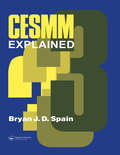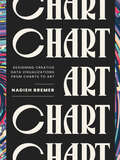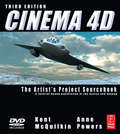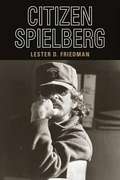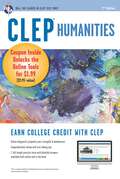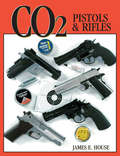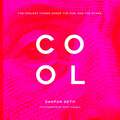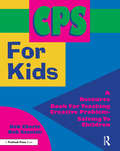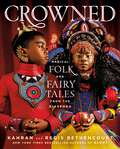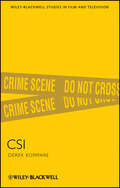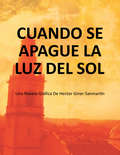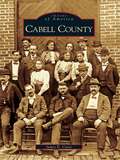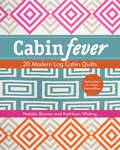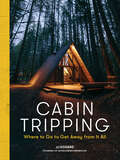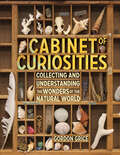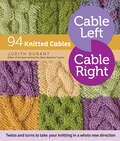- Table View
- List View
CDOs im öffentlichen Sektor: Perspektiven auf Chief Digital Officers und Strategien zur digitalen Transformation
by Christian SchachtnerDieses Buch untersucht die Notwendigkeit innovativer Ansätze zur Administrationsdigitalisierung, indem Technologien wie KI, Blockchain und intelligente Prozesse genutzt werden, um den Erwartungen der Bürger gerecht zu werden. Besonderes Augenmerk liegt auf der Rolle der Chief Digital Officers (CDOs) bei der erfolgreichen digitalen Transformation innerhalb öffentlicher Institutionen. Die digitale Verwaltung erfordert frische Impulse, um mit den Fortschritten im Industriesektor Schritt zu halten, indem Technologien wie KI-gesteuerte Automatisierung, Blockchain-Transaktionen und Sicherheitswerkzeuge eingesetzt werden. Intelligente Prozesslösungen werden als transformativ angesehen, um die Service-Standards gemäß den Erwartungen der Bürger an den Staat aufrechtzuerhalten. Im Gegensatz zu kommerziellen Unternehmen bietet die Zusammenarbeit denjenigen, die die Digitalisierung im öffentlichen Sektor überwachen, erweiterte Skalierungsmöglichkeiten, indem sie auf Erfahrungen aus anderen Regionen und Metropolen zurückgreifen, die direkt anwendbar und wiederverwendbar sind. Im öffentlichen Bereich spiegeln digitale Strategien rechtliche und soziale Bedingungen wider, was Anpassungen und Anpassungsoptionen für Chief Digital Officers erforderlich macht, während sie die digitale Transformation leiten. Methodische Schwerpunkte in der Neugestaltung von Aufgabenstrukturen, Prozessoptimierung und der Motivation von Akteuren ergeben vielfältige Handlungsfelder für die neue Rolle des CDO in öffentlichen Institutionen. Dieses Buch untersucht die Instrumente, Strategien und Einstellungen, die notwendig sind, um transformative Initiativen in Organisationen erfolgreich umzusetzen, und betont bewährte Konzepte mit praktischer Anwendbarkeit, die es den Lesern ermöglichen, ihre eigenen Interaktionsmöglichkeiten als digitale Führungspersönlichkeiten abzuleiten. Das Buch ist eine prägnante Einführung in die spezifischen Anforderungen an visionäre Gestalter, die dynamische Veränderungen in nutzerzentrierten öffentlichen Dienstleistungen vorantreiben.
CDOs in the Public Sector: Perspectives on Chief Digital Officers and Digital Transformation Strategies (SpringerBriefs in Applied Sciences and Technology)
by Christian SchachtnerThis book explores the need for innovative approaches to administrative digitization, leveraging technologies such as AI, blockchain, and smart processes to meet citizens' expectations, with a particular focus on the role of Chief Digital Officers (CDOs) in driving successful digital transformations within public institutions. Administrative digitization requires fresh inputs to match the leaps seen in the industry sector, utilizing technologies like AI-driven automation, blockchain transactions, and security tools. Smart process solutions are seen as transformative in upholding service standards aligned with citizens' state expectations. Unlike commercial companies, collaboration offers those overseeing public sector digitization enhanced scaling opportunities by drawing from experiences in other regions and metropolises, directly applicable and reusable. In the public realm, digital strategies mirror legal and social conditions, necessitating adjustments and adaptation options for Chief Digital Officers as they lead digital transformation. Methodological focal points in task structure redesign, process optimization, and motivating actors yield diverse action areas for the CDO's new role in public institutions. This book explores the instruments, strategies, and attitudes necessary to successfully implement transformative initiatives in organizations, emphasizing proven concepts with practical applicability, enabling readers to derive their own interaction options as digital guidance leaders. The book is a concise introduction to the specific requirements for visionary designers driving dynamic changes in user-centric public services.
CESMM 3 Explained (Spon's Price Books)
by Bryan SpainCESSM 3 Explained provides a detailed and highly illustrated guide to the use of the new civil engineering standard methods of measurements.
CHART: Designing Creative Data Visualizations from Charts to Art (AK Peters Visualization Series)
by Nadieh BremerCHART is a guide to unleashing creativity in data visualization. It takes you on a journey along the spectrum from an ordinary chart to data art, packed with ways to bring more creativity into any visualization. It will help to make your visuals more compelling and memorable, long after the numbers have been crunched.Drawing from over a decade of experience, the author shares thirteen hands-on, tool-agnostic lessons, each filled with actionable insights and unique perspectives. Between these core lessons, you’ll find tips, mini-chapters, and dozens of real-world examples from both client and personal projects. The book also includes exclusive glimpses into early sketches, works-in-progress, and in-depth design stories that reveal how creativity in data is often a messy, non-linear, but ultimately rewarding process. CHART: Designing Creative Data Visualization from Charts to Art is designed for journalists, data analysts, business professionals, and newcomers alike, these lessons empower readers to push beyond the default. By the end of the book, you’ll have the tools and inspiration to transform typical charts and graphs into visuals that not only inform but also captivate and connect with your audience. This book invites you to break the mold and think outside the chart.
CIGOS 2021, Emerging Technologies and Applications for Green Infrastructure: Proceedings of the 6th International Conference on Geotechnics, Civil Engineering and Structures (Lecture Notes in Civil Engineering #203)
by Cuong Ha-Minh Anh Minh Tang Tinh Quoc Bui Xuan Hong Vu Dat Vu Khoa HuynhThis book highlights the key role of green infrastructure (GI) in providing natural and ecosystem solutions, helping alleviate many of the environmental, social, and economic problems caused by rapid urbanization. The book gathers the emerging technologies and applications in various disciplines involving geotechnics, civil engineering, and structures, which are presented in numerous high-quality papers by worldwide researchers, practitioners, policymakers, and entrepreneurs at the 6th CIGOS event, 2021. Moreover, by sharing knowledge and experiences around emerging GI technologies and policy issues, the book aims at encouraging adoption of GI technologies as well as building capacity for implementing GI practices at all scales. This book is useful for researchers and professionals in designing, building, and managing sustainable buildings and infrastructure.
CINEMA 4D: The Artist's Project Sourcebook
by Kent McQuilkin Anne PowersMake the creative leap to 3D. Realize your artistic vision with this treasure chest of instructional, practical projects. Get the essential concepts and techniques without drowning in the technical complexities.
CITIZEN SPIELBERG
by Lester D. FriedmanSteven Spielberg is the director or producer of over one third of the thirty highest grossing films of all time, yet most film scholars dismiss him as little more than a modern P. T. Barnum--a technically gifted and intellectually shallow showman who substitutes spectacle for substance. To date, no book has attempted to analyze the components of his worldview, the issues which animate his most significant works, the roots of his immense acceptance, and the influence his vast spectrum of imaginative products exerts on the public consciousness. In Citizen Spielberg, Lester D. Friedman fills that void with a systematic analysis of the various genres in which the director has worked, including science fiction (E.T.), adventure (Raiders trilogy), race films (The Color Purple, Amistad), and war films (Saving Private Ryan, Schindler's List). Friedman concludes that Spielberg's films present a sustained artistic vision combined with a technical flair matched by few other filmmakers, and makes a compelling case for Spielberg to be considered as a major film artist.
CLEP® Humanities Book + Online (CLEP Test Preparation)
by Robert Liftig Marguerite BarrettEarn College Credit with REA’s Test Prep for CLEP Humanities Everything you need to pass the exam and get the college credit you deserve. REA leads the way in helping students pass their College Board CLEP exams and earn college credit while reducing their tuition costs. With 25+ years of experience in test prep for the College-Level Examination Program (CLEP), REA is your trusted source for the most up-to-date test-aligned content. Whether you’re an adult returning to finish your degree, a traditional-age college student, a military service member, or a high school or home-schooled student looking to get a head start on college and shorten your path to graduation, CLEP is perfect for you. REA’s expert authors know the CLEP tests inside out. And thanks to our partners at Proctortrack (proctortrack.com/clep), you can now take your exam at your convenience, from the comfort of home. Prep for success on the CLEP Humanities exam with REA’s personalized three-step plan: (1) focus your study, (2) review with the book, and (3) measure your test-readiness. Our Book + Online prep gives you all the tools you need to make the most of your study time: Diagnostic exam: Pinpoint what you already know and what you need to study.Targeted subject review: Learn what you’ll be tested on.Two full-length practice exams: Zero in on the topics that give you trouble now so you’ll be confident and prepared on test day.Glossary of key terms: Round out your prep with must-know vocabulary.REA is America’s recognized leader in CLEP preparation. Our test prep helps you earn valuable college credit, save on tuition, and accelerate your path to a college degree.
CO2 Pistols & Rifles
by James HouseCurrent safety trends encourage shooters to opt for guns of less power, especially CO2-powered guns. Several airgun shooters are not required to go through the traditional buying procedures of high-powered pistols and rifles, such as background checks and waiting periods. Plus, companies such as Colt, Smith & Wesson, and Walther manufacture high quality CO2 products that are visually indistinguishable from their traditional firearms. In this new guide to CO2-powered pistols and rifles, James E. House offers a comprehensive history of CO2 guns, dating back to the 1930s, and a discussion of propulsion, pellets, and sights. Beginning shooters are introduced to the market with a complete analysis on performance and accuracy of currently available products. Airgun enthusiasts are reunited with CO2 classics no longer being manufactured. This book also offers additional sections on target shooting, games, and varmints. Offers a comprehensive history of CO2 pistols and rifles dating back to the 1930s Includes a categorical review of BB pistols, .177 caliber pistols, .20 and .22 caliber pistols, and rifles Discover products currently available only on the secondary market
CONTROL DE PLAGAS PARA HORTICULTURA ORGÁNICA
by Amber Richards Diana Rodríguez González¿Le preocupa introducir productos químicos en su huerto, especialmente cuando cultiva verduras, hortalizas, frutas y especias? Debería, ya que éstos suponen un riesgo para la salud de nuestras familias, mascotas y para el medioambiente. Sin embargo, hay un problema. ¿Cómo podemos defender nuestro huerto de las numerosas plagas y enfermedades que amenazan con destruirlo? Control de plagas para horticultura orgánica es un libro electrónico para horticultores (es especialmente útil para horticultores nóveles) que proporciona métodos prácticos, y a veces sorprendentes, para hacer frente a estos problemas con medios naturales y biológicos. La comida orgánica que nosotros mismos cultivamos es más sana, segura, sabrosa y fresca que su equivalente tratada con productos químicos. Asimismo, fomenta un entorno más sano para todos. Cultivar nuestro propio huerto orgánico puede reducir el gasto en alimentación, además de ser una afición entretenida. Incluso si no se dispone de espacio para un verdadero huerto, se pueden obtener beneficios con unos pocos cultivos elevados o en macetas. Éstos también se pueden beneficiar de esta información para lograr mejores resultados y una cosecha más sana y robusta. Descargue su copia ahora.
COOL: The Coolest Things Under the Sun. And the Stars.
by Swapan SethCOOL is a book of lists that mirror the author, Swapan Seth's eclectic taste across categories: from boltholes to exotic hideaways. It is a ready reckoner to the hip and the happening, of the known and the very unknown.
COVID-19: Pandemic Impacts on Architecture and Urbanism (The Urban Book Series)
by Anna Yunitsyna Edmond Manahasa Fabio NaselliThis book gives an overview of the shifting paradigm from traditional design techniques and standards to new values and methods that occurred in response to confronting the COVID-19 pandemic. The theoretical studies of the phenomenon of "new normality" in architecture, urbanism and social sciences are a source of knowledge for researchers, professors and students in the fields of architecture, urbanism and interior design. On-site applications of post-COVID-19 structures will be interesting for students, practitioners, developers and city managers. The issue of online design teaching and learning provides a set of practices that can be applied by both educators and trainees. The book also is useful for readers who are interested in recent trends in architecture and interior design: it provides a deep analysis of recent changes in architecture, which aim to make the environment disease-free and the space habitable during the long periods of lockdown.
CPS for Kids: A Resource Book for Teaching Creative Problem-Solving to Children (Grades 2-8)
by Bob Eberle Bob StanishGuide children to new heights with the Creative Problem Solving methods outlined in CPS for Kids. This book will teach your students an exciting and powerful problem-solving method from start to finish. Each step in the process, from finding problems to finding solutions, is outlined in detail and includes accompanying activities on reproducible pages. Designed for students in grades 2-8, these activities are challenging and interesting.Creative Problem Solving is a process that allows people to apply both creative and critical thinking to find solutions to everyday problems. CPS can eliminate the tendency to approach problems in a haphazard manner and, consequently, prevents surprises and/or disappointment with the solution.Students will learn to work together or individually to find appropriate and unique solutions to real-world problems they may face by using this tested method. Most importantly, they will be challenged to think both creatively and critically as they tackle each problem they face. CPS for Kids includes 30 reproducible classroom activities.Grades 2-8
CROWNED: Magical Folk and Fairy Tales from the Diaspora
by Kahran Bethencourt Regis BethencourtFrom the New York Times bestselling duo who brought you GLORY: Magical Visions of Black Beauty, comes CROWNED: Magical Folk and Fairy Tales from the Diaspora. Filled with visual magic and storytelling wonder, these stories reimagine our favorite and most beloved childhood fairy tales and folktales to encourage creativity, empower imagination, and foster self-esteem. <p><p>With a Foreword by Pulitzer Prize winner Salamishah TilletRevisit beloved classics, but with a twist, such as The Little Mermaid, Sleeping Beauty, Hansel and Gretel, Red Riding Hood, The Poisoned Apple, and find new favorites with stories created especially for the collection: Anansi and the Three Trials, Aku the Sun Maker, How the Zebra Got Its Stripes, The Legend of Princess Yennenga, and John Henry, the Steel-Drivin' Man. <p><p>A gift that will keep giving, CROWNED is a joyous celebration of Black beauty, determination, and imagination and a must-have for children and parents everywhere. <p> <b>New York Times Bestseller</b>
CSI (Wiley-Blackwell Series in Film and Television #13)
by Derek KompareThere are certain films and shows that resonate with audiences everywhere—they generate discussion and debate about everything from gender, class, citizenship and race, to consumerism and social identity. This new ‘teachable canon’ of film and television introduces students to alternative classics that range from silent film to CSI. Since its debut in September 2000, CSI’s fusion of cinematic spectacle, forensic pathology and character drama has regularly drawn in tens of millions of viewers around the world This original new study investigates CSI’s cultural importance, both for the media industry and for the criminal justice system itself, exploring its formal and narrative style, and its impact on media culture CSI provides a model for studying how genre, narrative, industry concerns, and the broad 'public life' of a television series contribute to our understanding of the nature and function of contemporary popular television
CUANDO SE APAGUE LA LUZ DEL SOL
by Hector Giner SanmartinPoema acerca de la última etapa de la vida, la del final de los días de la especie humana. Poema de la localidad de Chella, un pueblo de la provincia de Valencia (España), que cada año por la noche de todos los difuntos, recuerdan a niños y adultos con esta tradicional leyenda. El sol es una estrella que nació hace millones de años y para un futuro bien lejano, se provee su muerte, el libro narra los últimos momentos de vida de la especie humana.
Cabell County
by James E. CastoEstablished in 1809, Cabell County is located in West Virginia's Mid-Ohio Valley. When rail tycoon Collis P. Huntington pushed the tracks of his Chesapeake & Ohio Railway across the mountains from Virginia into Cabell County, he founded the town that would become the county's great metropolitan center. Business and industry soon began to rise, and Cabell grew into one of the Mountain State's busiest, most populous regions. This dramatic history of Cabell County begins with the arrival of the area's first settlers and continues into the 21st century. Introduced are James Holderby, Peter Cline Buffington, John Hunt Oley, and the other venturesome souls who set in motion the forces that made Cabell County the thriving place it is today. An informative text and 200 vintage photographs recreate key historical events, including the day when the James Gang robbed the Bank of Huntington, the sagas of Barboursville and Milton, the early days of Marshall University and its spectacular growth and success, and the strange but true story behind the creation of Ritter Park. Readers also gain a feel for life in past eras as they witness the paddlewheelers that plied yesterday's Ohio River and the steam locomotives that chugged their way through the county's history.
Cabin Fever: 20 Modern Log Cabin Quilts
by Natalia Bonner Kathleen WhitingThe bestselling authors of Modern One-Block Quilts update the most recognizable quilt pattern in history with new designs and dazzling colors. Don&’t be square—discover exciting log cabins in varied shapes and formations! Bestselling authors Natalia Bonner and Kathleen Whiting put an imaginative new twist on the classic block with bold colors and dramatic lines. Packed with possibilities, this collection offers 20 quilts each in 3 sizes (baby, throw, coverlet), with a bonus chapter on throw pillows and shams. Quick-sew techniques (no curves here!) make it easy to stitch big quilts. Whether you&’ve been quilting for months, years, or decades, these fresh layouts with straightforward construction are sure to inspire! &“Explore these fresh variations of the Log Cabin block and create an eye-catching modern quilt for your home.&”—Quiltmaker &“Simple blocks in clear bright colors. Only three techniques are used, Snowball block, half square triangles and pieced strips . . . There are alternative colorways for each quilt. It would be suitable for a beginner as the instructions and diagrams are easy to follow.&”—British Patchwork & Quilting
Cabin Lessons: A Nail-by-Nail Tale: Building Our Dream Cottage from 2x4s, Blisters, and Love
by Spike CarlsenWhen carpenter Spike Carlsen and his wife set out with their recently blended family of five kids to build a cabin on the north shore of Lake Superior, they quickly realized that painting, parenting, and putting up drywall all come with both frustrations and unexpected rewards. Part building guide and part memoir, Cabin Lessons tells the wryly funny, heartwarming story of their eventful journey — from buying an unforgiving plot of land on an eroding cliff to (finally) enjoying the lakeside hideaway of their dreams.
Cabin Porn: Inside
by Freda MoonLearn to make your own quiet place somewhere with this inspiring journey inside tranquil cabins and handmade homes, from the creators of the wildly popular Cabin Porn phenomenon. Cabin Porn began as an online project created by a group of friends to inspire their own homebuilding. It has grown into a global phenomenon, attracting thousands of submissions from fellow cabin builders and a passionate audience of millions interested in simple, efficient homes and the beauty of nature.Cabin Porn: Inside invites readers into these handmade homes to discover rooms of warmth and simplicity, connected by the universal desire to bring a simple building to life in harmony with the land around it. Each of these tranquil getaways is a lesson in living simply and joyfully.Here you will find hundreds of examples of what makes a cabin: the small details that enable their dwellers to live pleasantly and sustainably, as well as the mistakes and adaptations that reveal what builders must learn while creating their own homes. Perhaps most touching is the evidence that these homes have hosted charming and memorable evenings for the people who worked together to build them. Full of spellbinding spaces of warmth and ingenious simplicity, Cabin Porn: Inside is an invitation to the cabin of your dreams and to the serenity of a simpler life.
Cabin Porn: Inspiration for Your Quiet Place Somewhere
by Zach Klein Steven Leckart Noah KalinaRural escapes for those yearning for a simpler existence, by the creators of the wildly popular tumblr Cabin Porn.Created by a group of friends who preserve 55 acres of hidden forest in Upstate New York-Cabin Porn began as a scrapbook to collect inspiration for their building projects. As the collection grew, the site attracted a following, which is now a huge and obsessive audience.The site features photos of the most remarkable handmade homes in the backcountry of America and all over the world. It has had over 10 million unique visitors, with 350,000 followers on Tumblr. Now Zach Klein, the creator of the site (and a co-founder of Vimeo) goes further into the most alluring images from the site and new getaways, including more interior photography and how-to advice for setting up a quiet place somewhere. With their idyllic settings, unique architecture and cozy interiors, the Cabin Porn photographs, are an invitation to slow down, take a deep breath, and feel the beauty and serenity that nature and simple construction can create.y that nature and simple construction can create.
Cabin Style
by Chase Reynolds EwaldThe co-authors of American Rustic share inspirations for rustic elegance in home design for those who love living well in wild places. This gorgeously photographed volume offers visions of refined cabin style by top designers, builders, architects, and artists. From Napa to Nashville and along the Rocky Mountain spine, each project reflects the ways we live, and play, in nature. Whether a bison ranch, a log fishing cabin, a stone guest house, a lakeside retreat, a ski chalet, or a wine country barn, each home exhibits whimsical, playful, comfortable, and welcoming interiors and architecture—always inspired by the land. The homes curated in Cabin Style represent a fresh look at the genre, from traditional to transitional to modern. Interviews with architects, designers, builders and owners illuminate both the backstory and the creative process. Photographer Audrey Hall and writer Chase Reynolds Ewald have collaborated on five books, with their book American Rustic being named one of Best Home Design Books of 2015 by Architectural Digest.
Cabin Tripping: Where to Go to Get Away from It All
by JJ EggersA mountain lodge 5,000 feet up in Washington State&’s Cascades mountains, accessible only by skis—or an SUV tricked out with bulldozer-size snow tires. A sleek cabin just 80 minutes from Manhattan, overlooking the property&’s pond and 19 acres of woodland. A romantic, eco-friendly escape in the misty mountains of Bali&’s Gunung Agung volcano. A glass-domed Finnish hut offering unobstructed views of the Northern Lights. Whether readers are seeking a once-in-a-lifetime adventure or a quiet retreat, a cozy night around a firepit or a summery lakefront sojourn, Cabin Tripping delivers. Divided into six chapters—Forest, Tropics, Mountain, Arctic, Water, and Desert—the book features a curated collection of over 80 of the most incredible cabins available to rent all over the globe. Each cabin profile includes information on how to get there, activities to enjoy in the area (hiking trails, fishing holes, thermal spas, and more), and tips like when to plan your visit to maximize your &“leaf-peeping&” or whale-watching opportunities.
Cabinet of Curiosities: Collecting and Understanding the Wonders of the Natural World
by Gordon GriceExactly the book for every young explorer who loves finding stuff in nature and bringing it home. Cabinet of Curiosities is a lavishly illustrated introduction to the wonders of natural history and the joys of being an amateur scientist and collector. Nature writer Gordon Grice, who started his first cabinet of curiosities at age six when he found a skunk’s skull, explains how scientists classify all living things through the Linnaeus system; how to tell real gold from fool’s gold; how to preserve butterflies, crab shells, feathers, a robin’s egg, spider specimens, and honeycombs; how to identify seashells; the difference between antlers and horns; how to read animal tracks. And then, what to do with your specimens, including how to build a cabinet of curiosities out of common household objects, like a desk organizer or a box for fishing tackle.
Cable Left, Cable Right: 94 Knitted Cables
by Judith DurantKnitted cables, with their three-dimensional twists and turns, are a common element in lots of patterns — but most patterns don’t include directions for executing them. Cable Left, Cable Right, by expert knitter Judith Durant, eliminates the mystery with detailed, in-depth instructions for creating 94 different styles of cable, from perfectly plain to fantastically fancy. Close-up photos and clear instructions teach you the techniques you need, including design options like braids, diamonds, and pretzels so you can make your cables truly one-of-a-kind. This book is the perfect companion to any knitting pattern featuring cables, giving you the information and skills to make polished, beautiful, and unique cables for any project.


